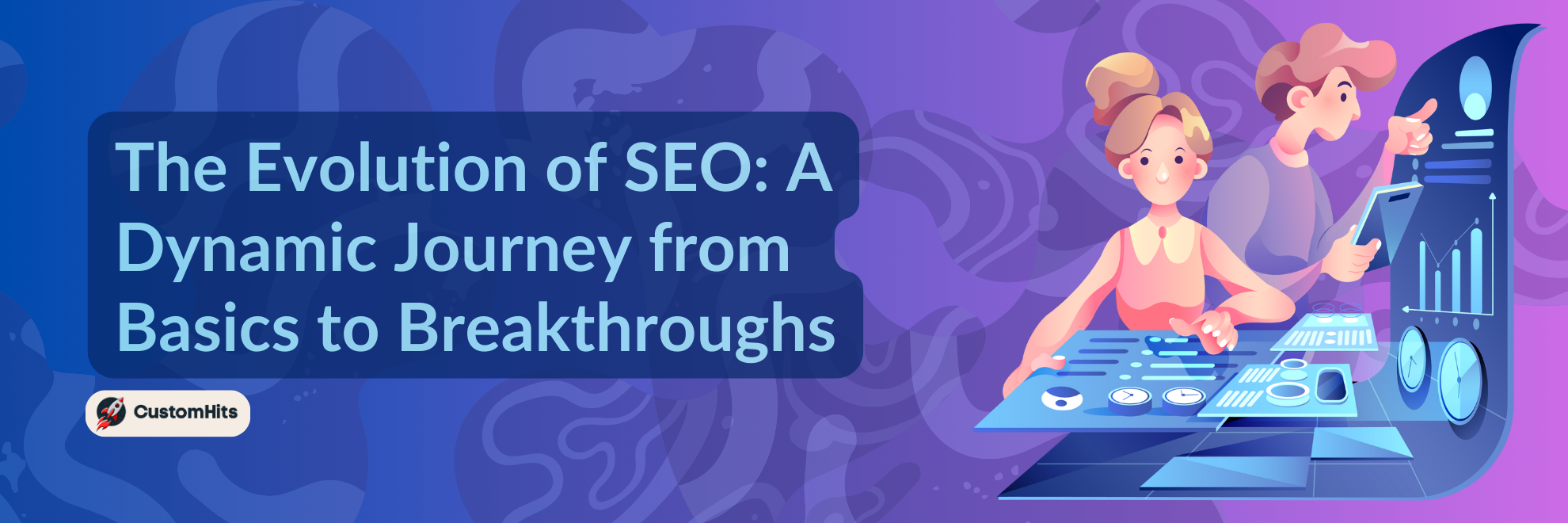

Overview
Content
SEO in the 1990s: The Wild West of Search
In the 1990s, SEO was in its infancy. Early search engines like Yahoo and AltaVista dominated, and web admins relied on basic tactics like keyword stuffing and meta tag manipulation to climb search rankings. These methods worked because search engines lacked sophisticated algorithms to filter spammy content.
The results? Messy and often irrelevant search experiences. Back then, SEO was more about exploiting loopholes than delivering user value.
Google Enters the Game and Changes Everything
When Google launched in 1998, it flipped the SEO playbook. Its revolutionary PageRank algorithm ranked pages based on the quality and quantity of backlinks, making relevance and authority critical factors.
Over the next decade, Google continued to tighten the screws with significant updates:
- Panda (2011): Cracked down on low-quality and duplicate content, forcing sites to prioritise originality.
- Penguin (2012): Penalised manipulative link schemes, putting authentic backlinks in the spotlight.
- Hummingbird (2013): Shifted focus to understanding user intent, making searches more conversational and intuitive.
These updates put users at the center of SEO strategies. Brands that ignored these changes quickly lost their rankings, while those that embraced quality content and ethical practices thrived.
Mobile and Local SEO Take the Spotlight
The explosion of smartphones in the 2010s reshaped search behaviour. People began relying on their devices for on-the-go information, prompting Google to launch the Mobilegeddon update (2015). This update significantly boosted mobile-friendly websites, forcing businesses to adopt responsive designs and prioritise fast load times.
At the same time, local SEO surged in importance. Google My Business and local search optimisations allowed small businesses to compete with more prominent players by targeting customers in their immediate areas. The rise of “near me” searches underscored the need for companies to embrace localised strategies.
Voice Search and AI Redefine SEO
The emergence of voice search through devices like Alexa and Google Assistant pushed SEO into new territory. Unlike traditional text searches, voice queries are conversational, requiring a focus on natural language and long-tail keywords.
Google’s RankBrain (2015), an AI-powered algorithm, revolutionised how search engines interpret complex queries. By understanding context and user intent, RankBrain pushed marketers to create particular, user-focused content that answers real-world questions.
SEO in the Modern Era: Key Trends Shaping the Field
Core Web Vitals and User Experience
In 2021, Google prioritised website performance with Core Web Vitals. Metrics like page load speed, interactivity, and visual stability now directly impact rankings, emphasising the importance of seamless user experiences.
E-E-A-T: Expertise, Experience, Authority, and Trust
Google’s push for high-quality, credible content continues to grow. The E-E-A-T framework prioritises sites with authoritative voices and trustworthy information, especially in critical areas like health, finance, and education.
Video and Visual Search
Video content is exploding, with platforms like YouTube becoming critical players in SEO. Meanwhile, visual search tools like Google Lens allow users to search with images, opening new opportunities for businesses to optimise their visuals.
Zero-Click Searches
“Zero-click searches,” where Google answers questions directly in the search results, have redefined visibility. While these features give users instant answers, they challenge businesses to rethink how they drive traffic.
AI-Powered SEO Tools
AI tools like ChatGPT and Google’s Bard make it easier for marketers to analyse trends, generate ideas, and optimise strategies. These innovations level the playing field, empowering businesses of all sizes to compete effectively.
The Road Ahead for SEO
Personalisation, AI integration, and new technologies like augmented reality (AR) and virtual reality (VR) will shape the future of SEO. As privacy regulations tighten and third-party cookies phase out, businesses must find creative ways to engage users while respecting their data.
SEO’s next phase will require a bold mix of innovation, adaptability, and a laser focus on delivering user value. Those who stay ahead of the curve will reap the rewards of this ever-evolving field.
Conclusion
SEO’s evolution is a story of constant innovation. From keyword stuffing to AI-driven strategies, it has matured into a sophisticated discipline prioritising user intent, quality content, and cutting-edge technology. Businesses that embrace these changes head-on will survive and thrive in the fast-paced digital landscape.
